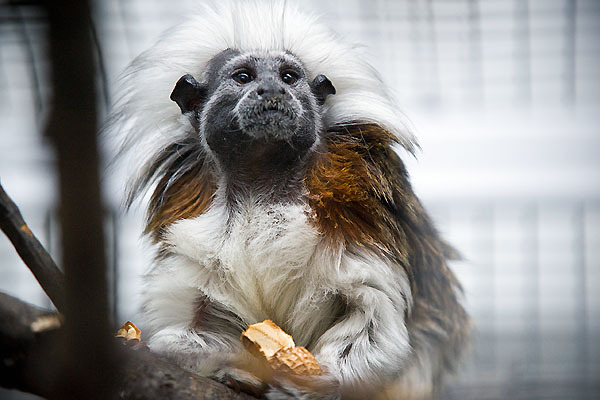Hormone known for mother’s milk also fosters bond between parents
Research has discovered a role for prolactin, the hormone that stimulates milk production in nursing mothers, in the bond between parents.
The study relied on hormone analyses of urine from cotton-top tamarins, a small, endangered monkey native to Colombia. They live in monogamous family groups where both parents help care for the young, which is similar to humans.
The study found a link between prolactin levels and sexual activity and cuddling among paired adults. Although this was a first for prolactin, it has previously been found for oxytocin, a hormone that stimulates childbirth and is linked to a range of pleasurable emotions.
Prolactin levels were high among pairs that frequently had sex and cuddled and low among mothers that had finished nursing, even though their infants remained nearby.
“The fathers are so busy taking care of the kids, they probably had less time for cuddling and interacting with their partners,” says first author Charles Snowdon, an emeritus professor of psychology at University of Wisconsin–Madison. “When you look at mothers who had lower prolactin, they had less sex with their partners.”
The results, just published in the online journal PLoS One, add to the growing number of parallels between oxytocin and prolactin.
“The behavioral aspects of prolactin have received less study than those of oxytocin,” Snowdon says.
By elaborating on the picture of hormonal activity in pair bonding, the study sheds light on the critical role hormones play in rewarding behavior related to monogamy.
The discovery about 25 years ago that oxytocin had an important role in pair bonding “was a conceptual breakthrough that oxytocin was not just about parenting, or the mother-infant bond, but about the pair bond between the adults,” Snowdon says. “Now we are finding something similar for prolactin, which is a hormone with different physical effects.”
The discovery in other studies of high prolactin levels among males who care for infants (in humans and other primates) made prolactin seem likely to be causing the parenting behavior.
But Snowdon says he and co-author Toni Ziegler of the Wisconsin National Primate Research Center believe prolactin may be a result of parenting instead. “Maybe it’s not serving as a mechanism to drive parental care, but it’s a consequence, a reward for parental care.”
The idea that prolactin and oxytocin may supply rewards was reinforced by a German study that found a burst of both hormones when men and women reached orgasm while making love. “This suggested to me that prolactin may, among other things, function as a reward mechanism for sex,” Snowdon says.
There is other evidence that prolactin has a role in reward circuits, Snowdon says. “Prolactin inhibits arousing chemicals in our nervous system, reducing our desire.”
The non-invasive study was performed on a tamarin colony that lived in the UW–Madison psychology department. In 2008, the colony was closed and the animals were transferred to zoos, sanctuaries and other colleges.
The recognition that two hormones play parallel roles in pair bonding for both sexes in a range of mammals accords with other trends in hormones and parental behavior, Snowdon says. “There is an amazing overlap between prolactin and oxytocin. It’s logical to assume that the same hormones and brain areas are involved in controlling a behavior that is as important to survival as parenting and pair bonding. We’re discovering that a good pair bond is a precursor for good paternal care in humans as well as monkeys.”
Tags: primates, psychology, research





